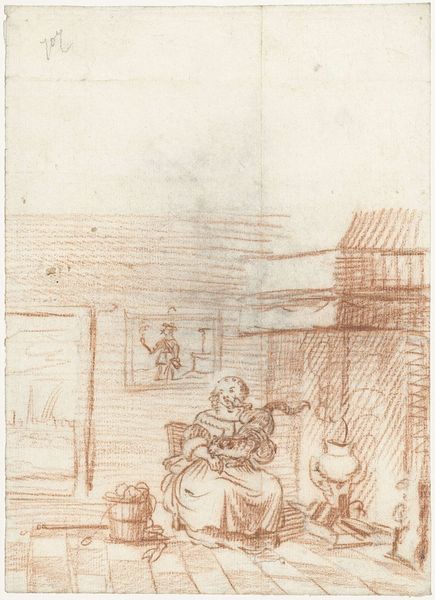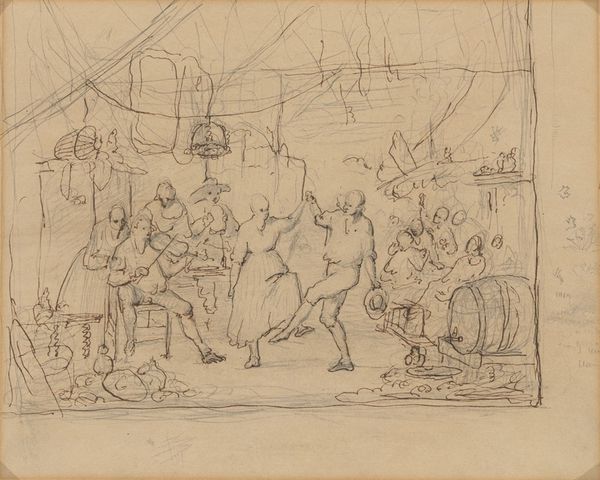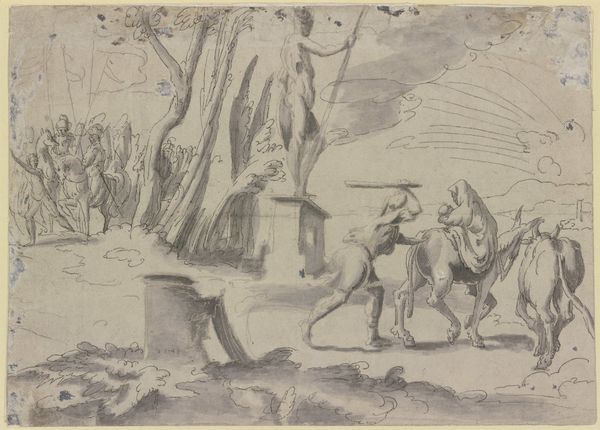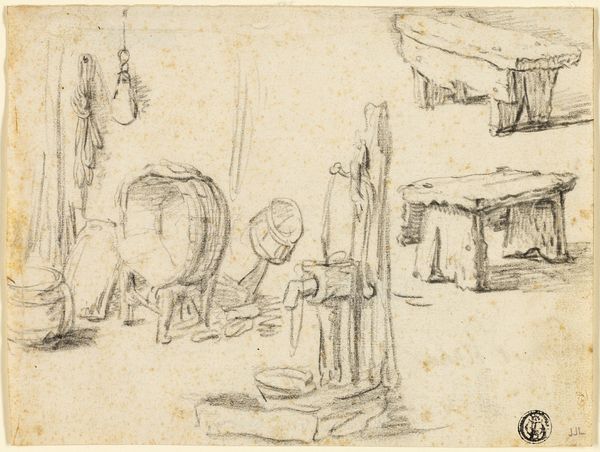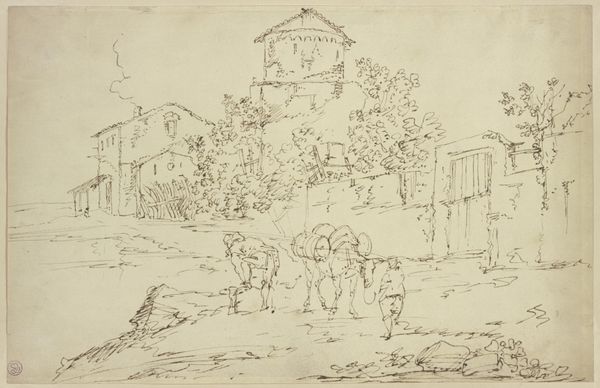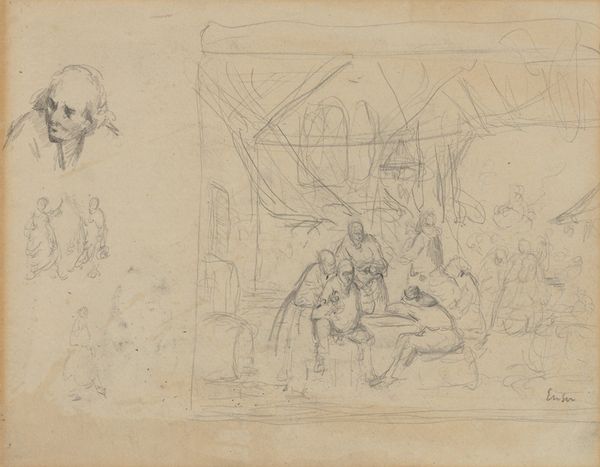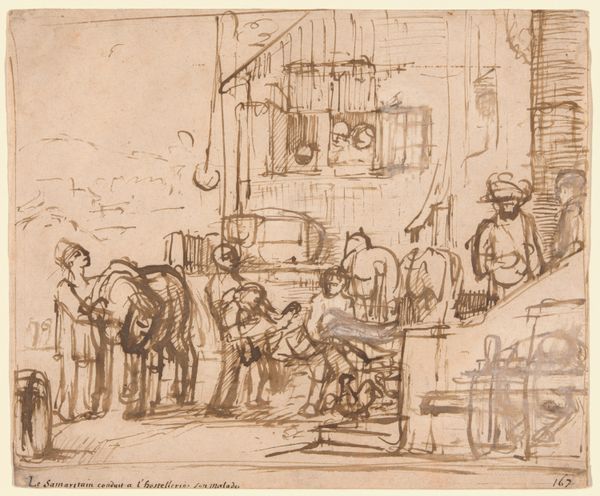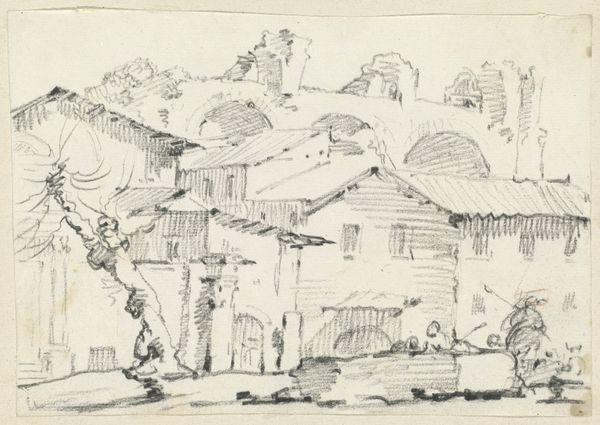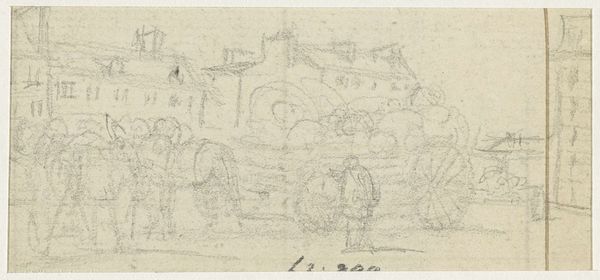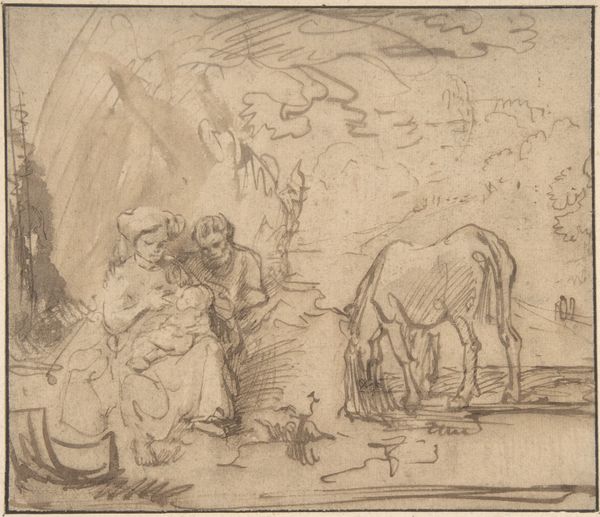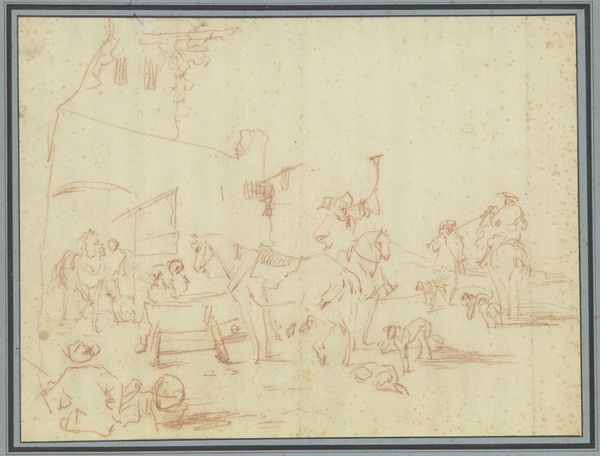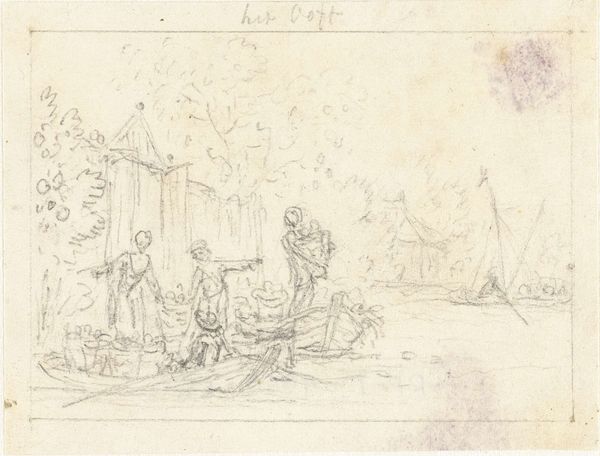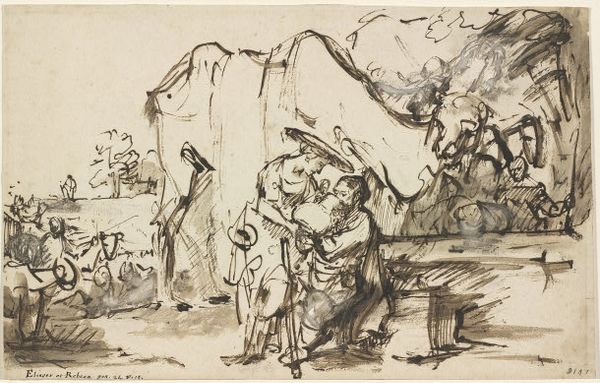
Copyright: Public Domain: Artvee
Curator: Here we have Elihu Vedder's pencil drawing, "Son and Donkey," dating from around 1859. It offers a glimpse into everyday life with distinct Romantic leanings. What’s your initial reaction? Editor: Hmmm, my first thought? It feels like a half-remembered dream. All soft edges and whispers of form, like trying to grasp a feeling just out of reach. There’s a lightness, almost playful despite the simple subject matter. Curator: That resonates. Vedder, while often associated with Symbolism, definitely taps into a Romantic sensibility here. Consider the social context— genre paintings, works depicting everyday scenes, were becoming increasingly popular. But Vedder infuses it with his own unique perspective. How might his cultural identity as a westerner manifest here, since it depicts what seems to be Middle-Eastern life? Editor: Interesting! I get a sense that he could feel somewhat detached from it; there's an atmospheric haziness in the details and figures. Maybe like experiencing this landscape filtered through memory. It almost looks like a stage set, which might reflect his experience of difference... Curator: That idea of a stage set is astute. While the figures suggest an engagement with everyday life, there's a dreamlike quality. We need to acknowledge Vedder's background – his experiences as an American artist abroad definitely colored his portrayals. Editor: Yeah, exactly. And isn’t it interesting that the kid seems to be ‘steering’ the donkey—though it’s difficult to steer anything with such nonchalance, and such limp body language. In this landscape, who gets to ride, and who has to lead? Metaphorically, that stirs up quite the kettle of fish. Curator: Precisely! That’s a critical point, thinking about labor and its representation here. And this composition reflects those questions of positionality and labor! It opens avenues for broader dialogues about the romanticized views that emerged through this period of painting in North African, and Middle Eastern countries. Editor: You're right. It really does bring to the fore our positionality as interpreters of art, what we bring to it. This piece, which felt light and almost whimsical to start, turns out to have surprising depths. Curator: Absolutely. Vedder’s sketch becomes a window into complex themes if we're willing to explore the sociohistorical backdrop of nineteenth-century Orientalism and Western identity.
Comments
No comments
Be the first to comment and join the conversation on the ultimate creative platform.
